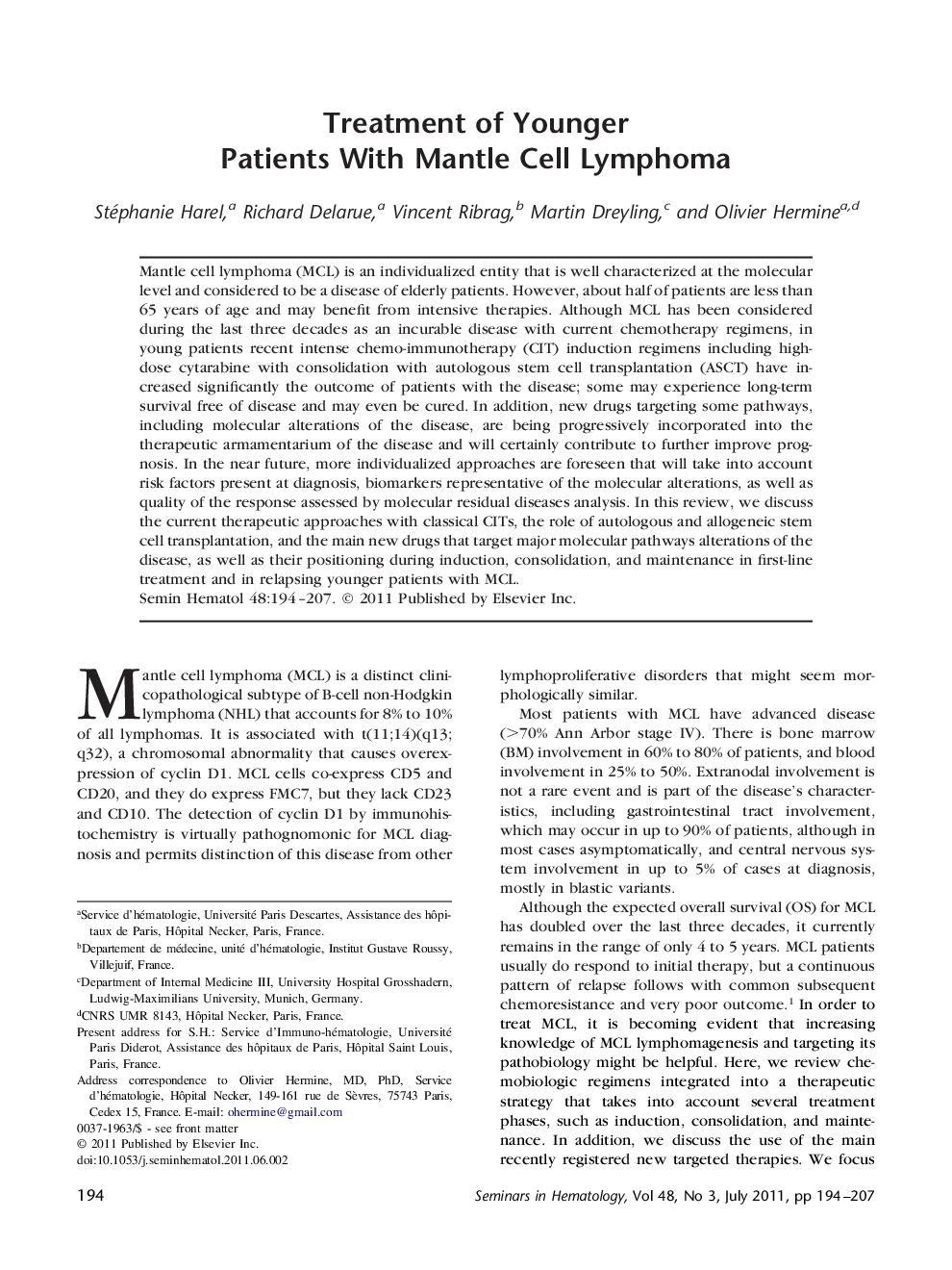| Article ID | Journal | Published Year | Pages | File Type |
|---|---|---|---|---|
| 3333694 | Seminars in Hematology | 2011 | 14 Pages |
Abstract
Mantle cell lymphoma (MCL) is an individualized entity that is well characterized at the molecular level and considered to be a disease of elderly patients. However, about half of patients are less than 65 years of age and may benefit from intensive therapies. Although MCL has been considered during the last three decades as an incurable disease with current chemotherapy regimens, in young patients recent intense chemo-immunotherapy (CIT) induction regimens including high-dose cytarabine with consolidation with autologous stem cell transplantation (ASCT) have increased significantly the outcome of patients with the disease; some may experience long-term survival free of disease and may even be cured. In addition, new drugs targeting some pathways, including molecular alterations of the disease, are being progressively incorporated into the therapeutic armamentarium of the disease and will certainly contribute to further improve prognosis. In the near future, more individualized approaches are foreseen that will take into account risk factors present at diagnosis, biomarkers representative of the molecular alterations, as well as quality of the response assessed by molecular residual diseases analysis. In this review, we discuss the current therapeutic approaches with classical CITs, the role of autologous and allogeneic stem cell transplantation, and the main new drugs that target major molecular pathways alterations of the disease, as well as their positioning during induction, consolidation, and maintenance in first-line treatment and in relapsing younger patients with MCL.
Related Topics
Health Sciences
Medicine and Dentistry
Hematology
Authors
Stéphanie Harel, Richard Delarue, Vincent Ribrag, Martin Dreyling, Olivier Hermine,
